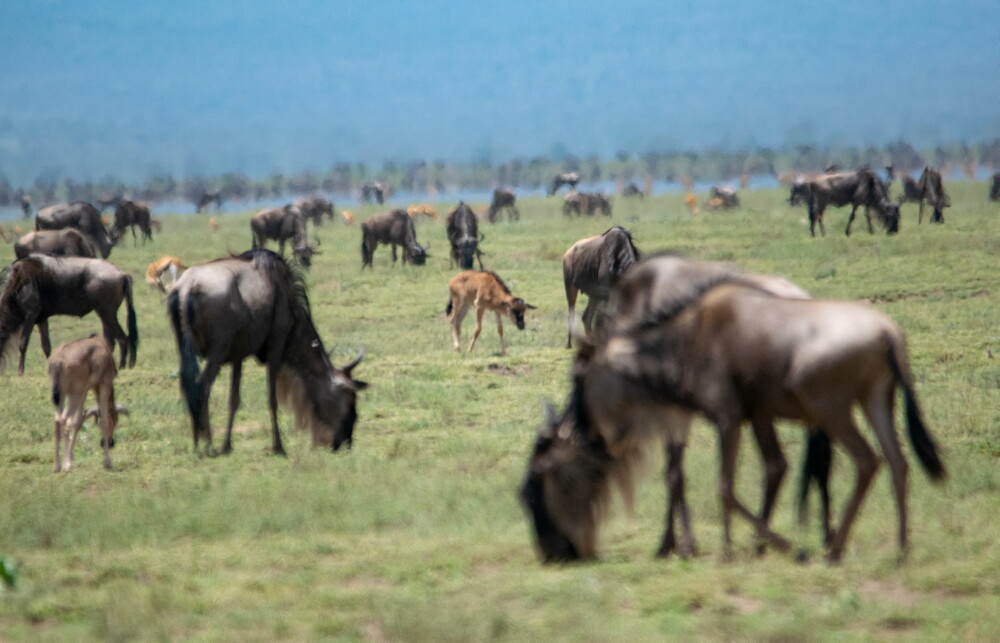It’s wildebeest calving safari season! Traveling to the Serengeti during calving season promises an exciting adventure full of wonder and plenty of action. Marvel at the wildebeest calving season in the endless expanses of southern Serengeti, stand awe-struck at the sight of the Great Wildebeest Migration topped by seeing the migrating wildebeest calving. Traveling to the Serengeti in Tanzania gives you the rare opportunity to witness calving season in the Serengeti, where thousands of wildebeest are born each day. Approximately 8,000 wildebeest are born every day during the peak calving season from early January to late February.
Life begins for a huge number of animals in the Ndutu region of the Ngorongoro Conservation Area. In the space of a few short weeks, the calving season sees half a million young wildebeest brought into the world. This is due to the rainy season combining with the fertile volcanic soil of the region to create a lush carpet of short grass rich in essential vitamins. Nature is bound to take its course as survival of the fittest comes to the fore, watch as the wildlife action unfolds before your eyes .The calving season also introduces a host of predators looking to make a quick meal of the vulnerable calves. With so many young and weak calves stumbling around, it becomes easy for the lions, leopards, and cheetahs to pick off a tasty morsel. It’s during this time when the southern Serengeti and western Ngorongoro Crater host the highest concentration of predators in Africa at a given time.
But an easy kill isn’t always guaranteed. Female wildebeest instinctively know to head to the short grass plains so that they can see approaching predators. There they form a barricade around birthing mothers to protect them and the young when they are the most vulnerable, during birth, ensuring the majority of the young survive.

